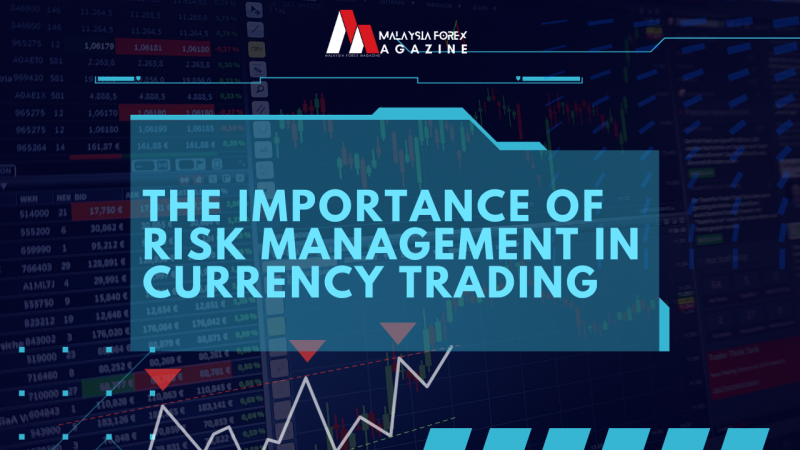The global currency markets, also known as the forex (foreign exchange) market, have consistently been one of the largest and most liquid financial markets in the world. With trillions of dollars exchanged daily, it is no surprise that forex continues to attract traders, investors, and institutions from across the globe. As we look ahead to 2025, the currency markets are expected to evolve in response to a variety of factors, including technological advancements, geopolitical shifts, and economic developments. This article explores the key trends and expectations for the currency markets in 2025, along with essential strategies for navigating this dynamic environment.
1. Technological Advancements Shaping Currency Markets
By 2025, technology will continue to play a pivotal role in transforming the way currency markets operate. Innovations such as Artificial Intelligence (AI), Machine Learning (ML), and blockchain are expected to enhance trading strategies, market analysis, and even regulatory frameworks.
- Artificial Intelligence and Machine Learning: AI-powered algorithms are set to revolutionize forex trading by providing faster and more accurate analysis. These technologies can analyze vast amounts of data in real time, enabling traders to make better-informed decisions based on predictive modeling and data-driven insights. AI is also used in automated trading systems, helping traders execute trades efficiently without emotional biases.
- Blockchain Technology: Blockchain promises to bring transparency and security to currency markets. The ability to trace transactions and reduce fraud risks will create a more stable trading environment. Central banks worldwide are also exploring Central Bank Digital Currencies (CBDCs), which may impact the future dynamics of global currency markets.
- Robotic Process Automation (RPA): RPA is already streamlining back-office processes, reducing human error, and improving efficiency. In 2025, expect to see more forex brokers and financial institutions using RPA to automate routine tasks, ultimately leading to faster transaction times and lower operational costs.
2. Rising Influence of Central Bank Digital Currencies (CBDCs)
Central Bank Digital Currencies (CBDCs) are expected to be a significant development in the currency markets by 2025. Many central banks, including those of China, the European Union, and the United States, are exploring or testing digital versions of their national currencies. The impact of CBDCs on the forex market could be profound:
- New Trading Pairs: With CBDCs becoming more prevalent, new trading pairs may emerge in the forex market, where digital versions of fiat currencies are traded. This could lead to more currency options and diversify the market.
- Increased Cross-Border Transactions: CBDCs could streamline international payments and reduce transaction costs. This may foster greater global trade and investment, as businesses and investors can transact with less reliance on traditional banking systems.
- Impact on Currency Volatility: As CBDCs become integrated into the global financial system, they may reduce volatility in certain currencies, especially in regions with high inflation or unstable economies.
3. Geopolitical and Economic Developments Affecting Currency Markets
Geopolitical events and economic policy decisions have always played a critical role in influencing currency markets. In 2025, these factors will remain essential drivers of forex volatility.
- Global Trade Tensions: Trade wars, tariffs, and political instability in key regions like the U.S.-China relationship or Brexit-related uncertainties may continue to create market turbulence. Currency traders need to stay updated on international relations and be prepared for market swings due to sudden changes in global trade dynamics.
- Interest Rates and Monetary Policy: Central banks will maintain a close watch on inflation and economic growth to decide interest rate changes. As we move into 2025, countries will likely continue to adjust their monetary policies based on evolving economic conditions. Traders need to monitor key economic data releases, such as GDP, unemployment rates, and inflation figures, as they can trigger significant price movements in major currencies like the U.S. dollar (USD), Euro (EUR), and Japanese yen (JPY).
- Emerging Market Currencies: Emerging market currencies could experience increased volatility in 2025 due to geopolitical events, changing commodity prices, and the ongoing impact of climate change on local economies. Traders may look to diversify their portfolios with emerging market currencies, but they must also be mindful of the higher risk involved.
4. The Shift Towards Sustainable Investing
Sustainability is becoming a key factor for investors globally, and this trend is likely to influence currency markets in 2025. As more investors prioritize Environmental, Social, and Governance (ESG) factors, countries with strong ESG policies may see their currencies strengthened as international capital flows to regions that are considered socially and environmentally responsible.
- Green Bonds and Sustainable Currencies: The issuance of green bonds and the rise of sustainable investment products could push up demand for currencies from countries with robust environmental policies. Nations focusing on sustainable growth may also implement policies to support green currencies or trade deals that reward sustainable practices.
- Investor Sentiment: As the world becomes more eco-conscious, investor sentiment will increasingly factor in the sustainability practices of governments and companies. This could shift forex trading strategies toward currencies from countries with progressive environmental regulations and low carbon footprints.
5. Forex Trading Strategies for 2025
As the currency markets evolve, traders must adapt their strategies to stay competitive and capitalize on emerging trends. Here are a few strategies that can help forex traders succeed in 2025:
- Algorithmic and Automated Trading: Leveraging AI and machine learning-powered trading bots will become even more critical in 2025. Traders should invest in learning how to develop or use these automated systems to minimize human error, manage trades more efficiently, and take advantage of 24/7 market movement.
- Risk Management: With increasing market volatility, having a solid risk management plan is essential. Implementing stop-loss orders, managing position sizes, and diversifying your trading portfolio will help mitigate risks.
- News Trading: Traders who specialize in news trading will need to be adept at reacting quickly to economic announcements, geopolitical events, and central bank policy shifts. Monitoring economic calendars and understanding how these events affect currency values will be crucial for staying ahead of the market.
Conclusion: Currency Markets in 2025 – A Time for Innovation and Adaptation
The currency markets of 2025 will be shaped by technological advancements, evolving monetary policies, and increasing geopolitical dynamics. Traders who embrace these changes and adopt forward-thinking strategies will have an edge in this fast-paced, ever-changing environment. Whether it’s harnessing the power of AI, navigating the rise of CBDCs, or capitalizing on emerging market trends, success in the forex market will require adaptability, continuous learning, and a strong understanding of both traditional and innovative trading tools.
Disclaimer: Trading forex involves substantial risk and may not be suitable for all investors. Make sure to understand the risks involved and seek professional advice before engaging in forex trading.











